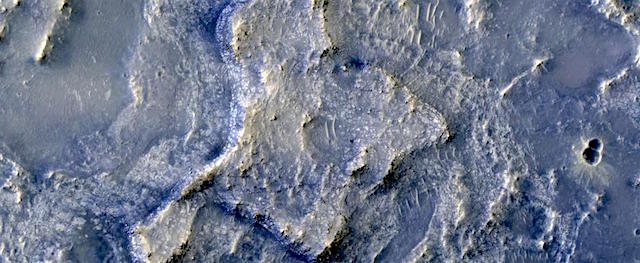 Brown University researchers have published the most detailed geological history to date for a region of Mars known as Northeast Syrtis Major, a spot high on NASA’s list of potential landing sites for its next Mars rover to be launched in 2020.
Brown University researchers have published the most detailed geological history to date for a region of Mars known as Northeast Syrtis Major, a spot high on NASA’s list of potential landing sites for its next Mars rover to be launched in 2020.
The region is home to a striking mineral diversity, including deposits that indicate a variety of past environments that could have hosted life. Using the highest resolution images available from NASA’s Mars Reconnaissance Orbiter, the study maps the extent of those key mineral deposits across the surface and places them within the region’s larger geological context.
“When we look at this in high resolution, we can see complicated geomorphic patterns and a diversity of minerals at the surface that I think is unlike anything we’ve ever seen on Mars,” said Mike Bramble, a Ph.D. student at Brown who led the study, which is published in the journal Icarus. “Within a few kilometers, there’s a huge spectrum of things you can see and they change very quickly.” [More at links]








